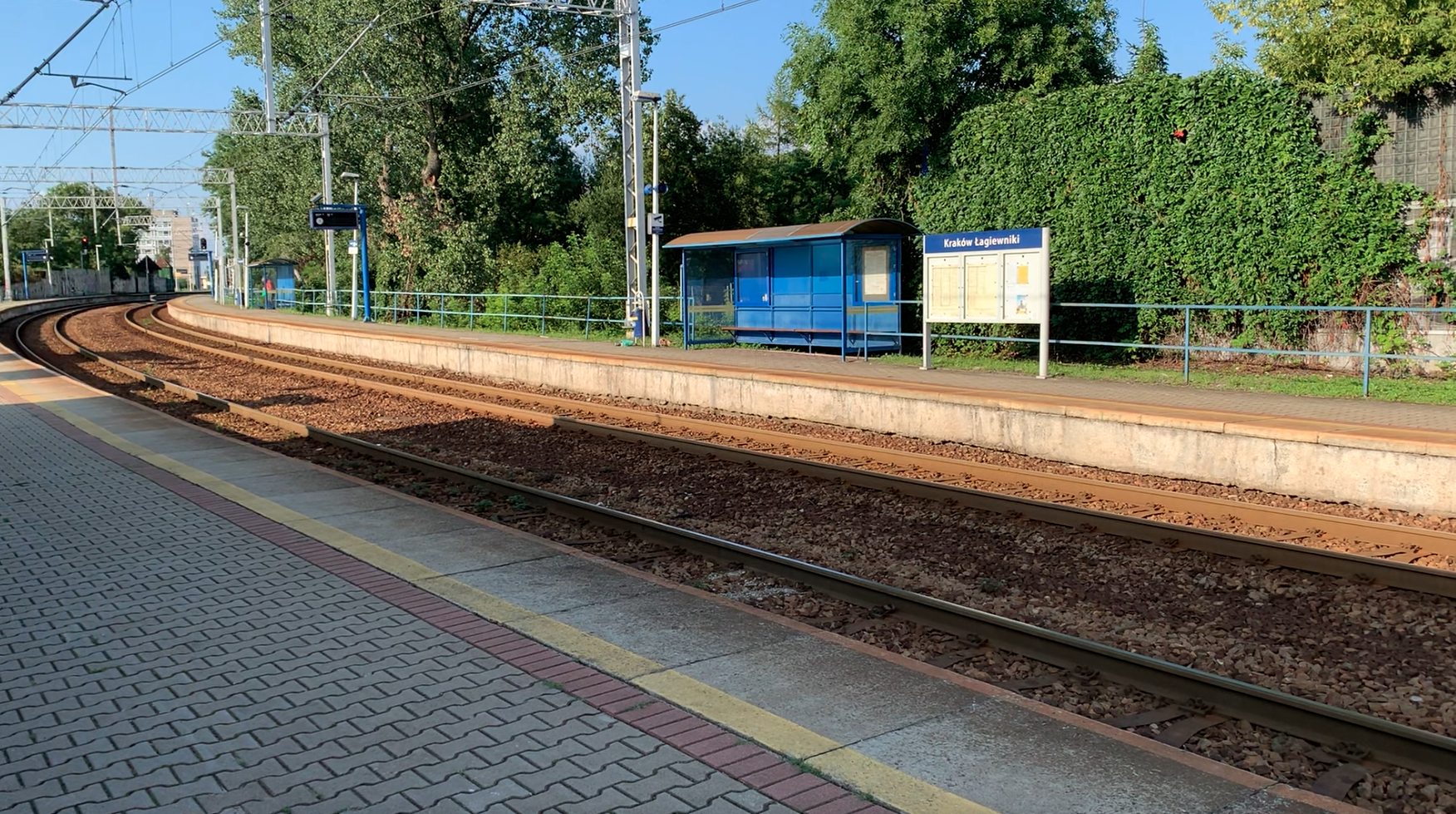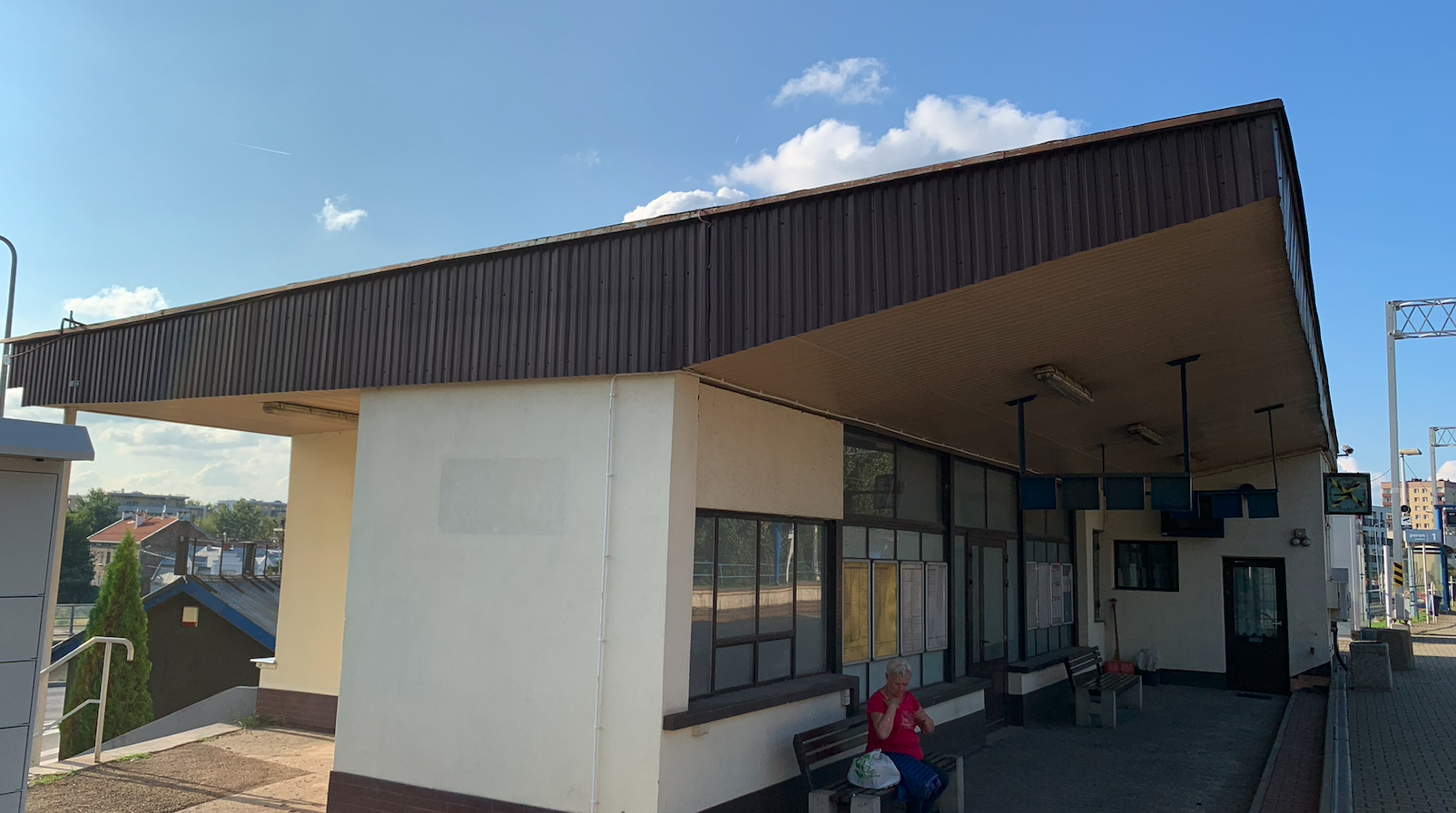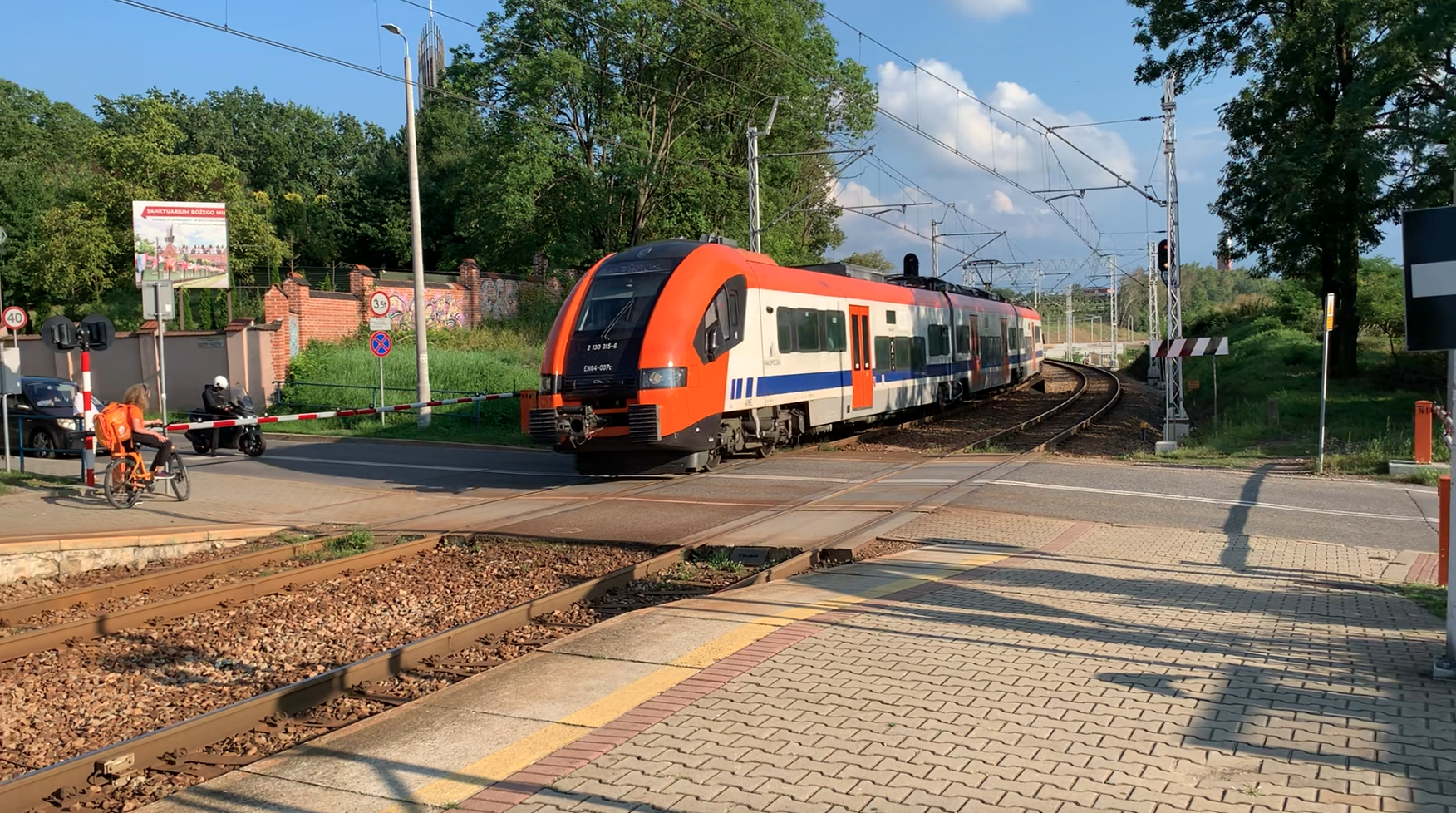Kraków 2022-11-10
Kraków Łagiewniki railway station.
Geographic coordinates: 50.023N 19.934E. Elevation 219 m above sea level The stop is at the railway line No. 94 Kraków Płaszów - Oświęcim.
Previous names: Borek Fałęcki in the period 1912-1939. Borek Falecki in the period 1939-1942, during the German occupation. Krakau Borek Falecki in the period 1942 - 1945, also during the German occupation. Borek Fałęcki in the period 1945 - 1966. Krakow Borek Fałęcki in the period 1966 - 2002. Krakow Łagiewniki since 2002.






The Borek Fałęcki (railway) passenger stop was built in the period when Kraków was under Austrian rule. The reason for the creation of this stop was the construction of several new workplaces in the suburbs of Krakow, on the exit road towards Myślenice, Zakopane, Slovakia and the need for workers of these factories to travel to work. Factories include the Solvay soda plant, a steel plant (Foundry Institute), fittings and cable production plants.
No railway sidings and storage yards were planned to be built here. At that time, the Kraków Bonarka - Swoszowice - Skawina railway line was already double-track. The stop was built in 2012, with two single-edge platforms. This stop layout is up to date. A small building was built next to the stop, where the ticket office, waiting room, railway service rooms and a flat were located. There was a lineman in the building who served the tollbooths of the railway crossing, today's Sister Faustyna Street.
After the aggression of the German army, because the occupiers could not pronounce the Polish letters "ł", "ę", the name of the stop was changed to Borek Falecki, and then the occupiers added the name Krakow, because they changed the administrative boundaries of the city. In January 1945, the Germans blew up the train stop building.
After the expulsion of the occupiers from Kraków, the historical name was returned to Borek Fałęcki on October 25, 1945. The new station building was built at the end of the 50's. The building was built in a simple form, with large glazing and functional. There was a waiting room, a RUCH kiosk and a ticket office in the building. The building still exists (2022).
On May 22, 1966, in Krakow, there was a major change in administrative boundaries. Many towns near Krakow were within the borders of Krakow. Therefore, the word Krakow was added to the name of Borek Fałęcki. Despite this, many passengers still called the stop Borek Fałęcki.
On January 6, 2002, the name of the stop was changed to Kraków Łagiewniki. The name change was a result of the construction of the Sanctuary of Divine Mercy in Łagiewniki next to the Convent of the Congregation of the Sisters of Our Lady. On August 17, 2002, Saint Pope John Paul II, during his last pilgrimage to Poland, consecrated the temple and entrusted the world to God's Mercy.
At the Kraków Łagiewniki stop, the ticket office was closed on October 1, 2009. In 2014, ticket machines were installed.
Due to the construction of the Łagiewnicka Road (2018-2022), the track in the area of the stop has been moved and replaced.
Written by Karol Placha Hetman
